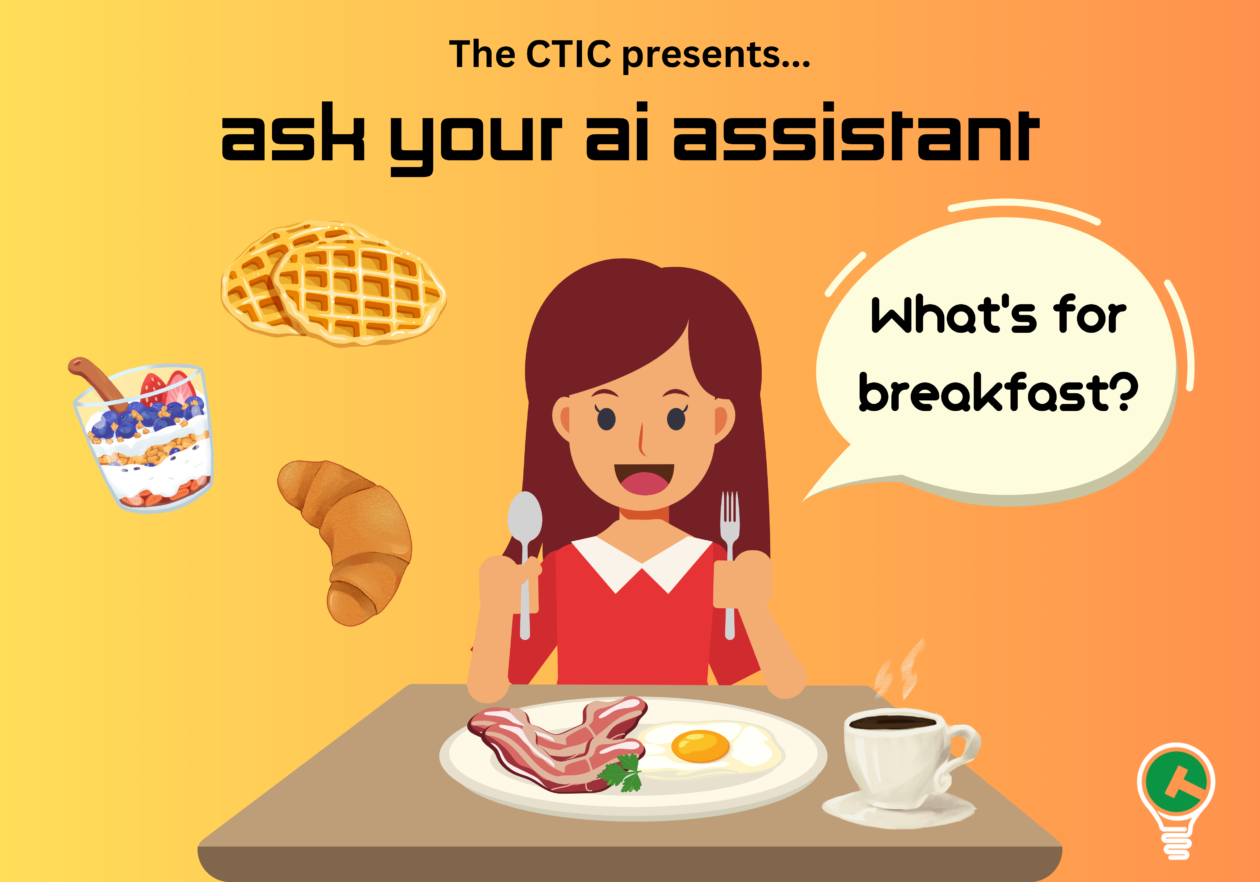
Everyone, everywhere seems to be talking about the amazing possibilities of artificial intelligence (AI). Many of them also suggest that the future of success in health and wealth is embedded in one’s ability to implement AI tools effectively.
Like any tool, it’s only as useful as its users ability. We interact with AI chatbots like ChatGPT through conversational exchanges – making requests, asking questions, and following up for clarification. The results it yields are only as good as the conversations we create. With applications like this, what you put in is what you get out, and how you prompt is key to the success of the interaction.
So, in this blog series, we are going to be talking about how you can inform and create prompts to generate information that can enhance and expand your everyday life. Let’s get started at a natural beginning: breakfast.
The Perfect Plan
Breakfast foods are my favorite, but it’s not always the meal I have the most time for. ChatGPT can help me plan ahead.
What you need: Gather the ingredients you would like to use in your breakfasts – or come in with an open mind for Open AI’s suggestions! Also consider how much time you want to spend each morning on preparing the breakfast food.
What you want: Do you want to prepare your food fresh? Are you okay with eating the same thing every day? Does it need to be transportable? Also think about what your food needs to do for you – like keep you full for a long-time or fuel you for an intense workout. This will deliver results that you will actually want to integrate into your mornings and screen out ChatGPT recommending a soufflé for your Monday morning commute.
What to prompt: I’ll give us a few examples:
- Is there something I can make for breakfast [insert ingredient]?
- What’s a [descriptor] breakfast I could make at home?
- What’s something I can prepare for a work week of breakfasts on the go?
- I don’t want to eat [ingredients], what can I make for breakfast?
As you’ll learn through experimenting, there are many ways to start the conversation with ChatGPT – and there are many ways it might respond. You can get better answers with more specific prompts, but you can also get better answers with follow up comments and questions.
For example, when I asked: what’s something I can prepare for a work week of breakfasts, ChatGPT responded with a recipe for overnight oats. I responded: “I don’t really like eating sweet things in the morning. Is there a savory option?” ChatGPT followed up with a breakfast preparation of savory egg muffins. I wanted another option, so I asked: “Is there another savory breakfast option I can prepare ahead of time?” I received a different recipe for a vegetable frittata.
After finding a recipe you might like, you can ask ChatGPT to create you an ingredient list for the grocery store. Specify things such as the number of servings and the days of the week the meal will be eaten to have a grocery list that keeps you full for the full week!
Working with What You’ve Got
The “we’ve got food at home” meme has pushed us to realize that we usually do indeed have food at home – just maybe not the ideas to make a meal out of it. Let ChatGPT be the casserole to your noodle and offer you some ideas of how to take what you have and turn it into something you can have for dinner.
What you need: Select your ingredients you would like to use in the meal. Maybe these will be some produce items that you would like to use up before they go rotten.
What you want: Think about what type of food you want, how long you’d be willing to spend on cooking the meal, and how many servings you would like to make. You can use this information to generate a result that more closely matches something you’d be willing to make and eat.
What to prompt:
- I have [insert ingredients]. Could you give me an idea for a [insert meal descriptors] meal using those ingredients?
OR
- I have [insert ingredients]. Could you give me [insert meal descriptors] meal ideas using those ingredients?
I prompted: “I have 1 yellow onion, a handful of spinach, and half a block of cheddar cheese. Could you give me an idea for a vegetarian and comforting meal that I can make in under a half hour?”
ChatGPT responded with a recipe for a cheesy onion and spinach frittata. When I asked using the other prompt format asking for “meal ideas,” I received five ideas, each with brief recipe descriptors.
ChatGPT does make some assumptions about household ingredients that I have – which is generally pretty useful, otherwise I’d have to write in every ingredient the could possibly be used in a recipe. The results can be narrowed by specifying ingredients that I don’t have. For example, I clarified an ingredient I didn’t have by responding with “I don’t have eggs, can I have some ideas that don’t need eggs?” ChatGPT would have screened for suggestions that included eggs and gave me results more relevant to my situation. The same could be done to alert ChatGPT to allergens, dietary restrictions, or nutrition goals. You will have to share this information each time you prompt for recipes, so consider keeping a Notes file of restrictions and needs that you can copy paste into ChatGPT for your convenience.
If you install the Instacart plug-in, you could then ask ChatGPT to add the ingredients you are missing to your Instacart.
Working with what you got can help inspire meals you haven’t tried with ingredients you already know, and it can help you cut down on food waste by helping you identify recipes that can use the ingredients you’ve got.
What will ChatGPT help you make this week? And, might you share with the Tech Council?!



